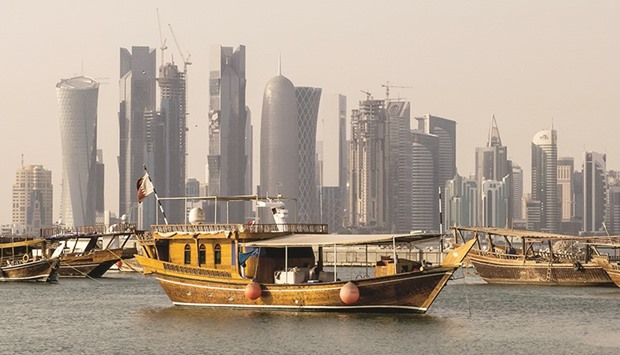When I first arrived in Qatar, it was all a bit of a shock. It was August, the heat was unbelievable, the driving was crazy and almost everything appeared to be the colour of sand. At least it was always sunny! It didn’t take as long as I thought it might to adapt to my new surroundings, but there were a few things which were more ingrained than I realised.
Strangely one of the hardest habits that I had to break was sorting my rubbish. Only people from certain countries will understand how automatic this chore becomes. If you finish a glass jar, it goes in a box, next to neatly flattened pieces of cardboard packaging and empty plastic milk bottles. Everything had to be sorted just so, or the recycling team would refuse to take it.
Back in England, as I sat there flattening my cardboard, my heating would be on the setting which should have been labelled ‘just bearable’. We were regularly subject to public service broadcasts telling us to turn down the heating and put on another jumper instead. As someone who always feeling cold, I generally wore a very large number of jumpers throughout the winter.
The environmental indoctrination started early. I can even remember a clown with an environmental message visiting my primary school. I can no longer remember much about the actual performance he gave, but for a long time I had a pencil that he gave me, which said ‘Save Energy, Shut Windows’. It was a strange slogan for a pencil, and odd to think that they thought it necessary to tell us to close windows before putting the heating. In their defence, all I can say is that the audience was young…
With my upbringing being so environmentally aware, it’s not really surprising that I found the lack of recycling in Doha strange, as I did with the lack of use of renewable energy. After all, Qatar is very flat, very windy and is surrounded on three sides by sea. It’s in the prime location to utilise wind energy, and as for solar energy, well you really couldn’t ask for more sunshine!
Of course the reason that renewable energy isn’t used much in Qatar is because the country is rich in hydrocarbons. Although petrol has just increased in price, there is still a generous subsidy for the lucky residents, as there is for electricity and water. This means there is little incentive for anyone to restrict their energy usage. Homes and businesses cool their offices down with powerful air conditioning units, to the point where many people wear extra layers at work or in the shopping malls.
However, recently the global price of oil and gas have tumbled. The government has already had to tighten its belt, and if they stay at their current low rate, there could well be further implications in the future. Eventually things here could start to change and saving energy could become a priority.
Although there is not much use of renewable energy in Qatar, it wouldn’t be true to say there is none. There are a few interesting solar developments, particularly the solar powered lights on the cycle path near the airport. These lights don’t use traditional solar panels, instead the photovoltaic cells are integrated in the light poles. At 13 kilometres long, this is the longest path in the world that uses these integrated poles.
In the Netherlands, they have taken things a step further, and essentially made a cycle path out of a giant solar panel. In many ways a road is the ideal substrate to use for collecting solar energy, as it often lies empty for large periods of the day. If it could collect the sun’s energy, this would be ideal. However, there are of course difficulties in making a road into a collector of solar energy. The surface needs to be robust enough to deal with traffic, whilst simultaneously giving traction to the tyres and transferring as much light as possible to the solar cells.
In the Netherlands, a solar road was initially attempted for bicycles, which are far lighter than most types of traffic. Scientists found they could build a decent substrate by sandwiching regular solar panels between layers of glass, silicon, rubber and concrete. A 70 metre test track was built, which in the first 6 months created enough energy to power a house for an entire year.
After this success, other countries are now following the lead. This week France announced plans to construct a 1,000 kilometre solar road. Each kilometre of this highway is designed to provide enough electricity to power 5,000 homes. That means this ambitious project aims to power 5 million homes when it is completed in five years.
As the price of solar panels continues to fall and technology improves, there are likely to be more ambitious solar projects unveiled in the near future. Imagine if the roads in Doha generated power, with the amount of sunshine we have we would be inundated with electricity! Plus there would be a strange sense of satisfaction in knowing that by powering our air conditioning units, the sun was actually cooling our homes.

Traditional dhows in front of the West Bay skyline as seen from the Doha Corniche. Photo by StellarD


